In South America the hypothesis
connecting the American Indians to the Ten Lost Tribes of Israel was
advanced mainly by Spanish missionaries and travellers while coming
across impressive archaeological remains of the pre-Columbian
civilizations or investigating the way of life of local tribes
believed to recognize various costumes and beliefs that they related
to the Bible and Judaism. Most reports referred to native tribes
living in regions that today are part of Bolivia, Ecuador, Venezuela,
and Peru, but also in the countries of Central America, especially
Mexico. Among the prominent expositors of those theories a mention
should be made of Father Diego Duran (d.c.1588), author of The
Aztecs: the History of the Indies of New Spain, Father Gregorio Garcia
and his Origen de Los Indios de la Nuevo Mundo
(Madrid, 1729).The supposed connection between the Ten Lost Tribes of
Israel and the Native American nations of North America gained support
during the 18th century with the increase of European
exploration of the continent. James Adair (1709-1783), a trader with
the Indians who lived amongst them for forty years was one of the
earliest to believe in a connection between the Ten Lost Tribes and
the various Indian tribes of North America, a theory that he
formulated in his History of the American Indians (London,
1775). At the same period, this theory also received the support by
Charles Beaty, a missionary to the territories west of the Allegheny
Mountains, who detailed it in his Journal of a Two Months Tour with
a View of Promoting Religion among the Frontier Inhabitants of
Pennsylvania, and of Introducing Christianity among the Indians to the
Westward of the Allegheny Mountains, (London, 1768).
In the 19th century a connection
with the Ten Lost Tribes of Israel was made again by the believers of the
Jesus Christ Church of the Latter-Day Saints. Believing to be descendants of
Israel, the Mormons identify themselves with all tribes of Israel and while
most are regarded as sons of Joseph through his son Ephraim, some see
themselves as belonging to other tribes of Israel.
Other 19th century supporters of
the link between the Ten Lost Tribes and Native Americans include E.
Boudinot (1740-1821), author of A Star in the West, or A humble attempt
to discover the long lost ten tribes of Israel, preparatory to their return
to their beloved city, Jerusalem. (Trenton, NJ, 1816), Ethan Smith
(1762-1849), author of View of the Hebrews (Poultney, VT, 1825),
Israel Worsley (1768-1836) whose View of the American Indians, Their
General Character, Customs, Language, Public Festivals, Religious Rites, and
Traditions Showing Them to Be Descendants of the Lost Tribes of Israel
was published in London in 1828. Mordecai Manuel Noah (1785-1851), a Jewish
American journalist, best remembered today for his plan to establish Ararat,
a Jewish state in North America, was another follower of the theory linking
the Ten Lost Tribes to the native nations of America. Noah published his
ideas in Discourse on The Evidences of the American Indians being
Descendants of the Lost Tribes of Israel delivered before the Mercantile
Library Association, Clinton Hall (New York, 1837).
Central Asia
The traditional quest for the Ten Lost Tribes
centered for many hundreds of years in the regions of Central Asia, close to
the borders of the Assyrian Empire of the Antiquity. As a result many ethnic
groups living in the region of the Caucasus, Central Asia, and Afghanistan,
have long been described as descendants from the Ten Lost Tribes. Giles
Fletcher (1548-1611), an English poet and envoy at the Russian court of
Moscow in the second half of the 16th century, disseminated a
theory according to which the Tatars of Central Asia are descendants from
the Ten Lost Tribes. Fletcher's theory continued medieval beliefs about the
origin of the Tatars, first mentioned in the chronicle of the 13th
century English monk, Matthew of Paris (d.1259), and again in a work by
Thomas Bradwardin (1290-1349). The supposed connection between the Ten Lost
Tribes and the Tatars continued to be entertained in the 18th
century by Aaron Hill, another Englishman.
Southern Russia and the areas around the
Caspian Sea were at the center of the Khazar Empire of the early Middle
Ages. The conversion to Judaism of some Khazar rulers served as basis for
many speculations about a possible connection between this people of
Turkish-Mongol origin and the Ten Lost Tribes. Moreover, Jewish communities
in the Caucasus like the Jews of Georgia or the Jews of Dagestan, also known
as the Mountain Jews, were connected to the Ten Lost Tribes. These theories
were advanced in the 19th century by Reverend Jacob Samuel, a Jew
converted to Christianity who became a missionary to the Jews of India,
Persia, and Arabia. Following his contacts with the Jews of Dagestan, Jacob
Samuel claimed that they are descendants from the Ten Lost Tribes, although
the Jews of Dagestan themselves did not have such a belief, as stated by
Jacob Samuel himself. His theories were published in An appeal on behalf
of the Jews scattered in India, Persia, and Arabia (London, 1840)
However, the Jews of Dagestan began to adopt this theory towards the end of
the 19th century, when again they were regarded as descendants
from the Ten Lost Tribes, this time by Russian Jews who started traveling
and settling in the Caucasus.
Afghanistan
Various tribes of Afghanistan, especially the
Pathans, have received perhaps the largest amount of attention from the
seekers of Ten Lost Tribes. The theory was originally advanced by European
travelers to the region, but it was later adopted by some Jews. They believe
that Afghanistan is probably the most suitable place for a search for the
Ten Lost Tribes, and even by some local Muslim inhabitants of Afghanistan.
The earliest theory about the Ten Lost Tribes origin of Afghan tribes was
lanced already towards the end of the 18th century by Sir William Jones
(1746-1794), an early researcher of Indian studies, in an introduction that
he wrote to the English translation of the "Secrets of the Afghans" by Henry
Vasittart (1732-1770), the British governor of Bengal and one of the first
Europeans with an interest in Afghan history and traditions. This theory
found a strong supporter in Henry Walter Bellew (1834-1892), an Indian born
English surgeon with a distinguished career in the British administration of
India. Bellew elaborated extensively about the possible connection between
various ethnic groups of Afghanistan and the Ten Lost Tribes and tried to
prove his assumptions by suggesting a likeness between biblical and historic
place names, Hebrew words and given names and local place names in
Afghanistan and some words from the languages and dialects spoken in that
country. He also advanced a supposed similarity of customs and habits
between the two peoples and, typically for a 19th century researcher, even
endeavored to establish a resemblance between the physiognomy of Afghan
tribes and that of the "Jewish type". Bellew was succeeded by many travelers
and explorers to Afghanistan and the neighboring areas who occasionally
suggested new elements that could enhance the belief in a link between the
tribes of Afghanistan and the Ten Lost Tribes.
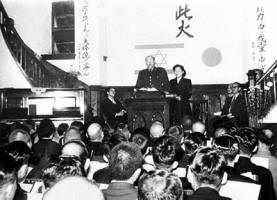 |
An American military rabbi lecturing about Judaism and the Ten Lost
Tribes in to members of the Group Holiness of the Saikun sect.
Tokyo, Japan, c. 1950
Beth Hatefutsoth – Visual Documentation Center
Courtesy of Sado Ohara
|
 |
The Onyeulo family of the Ibo Tribe. Some members of the tribe
attribute their origins to the ancient Israelites.
Biafra, Nigeria, 1978
Beth Hatefutsoth – Visual Documentation Center
Courtesy of Chima Davjudah Onyeulo, Israel
|
Myth of the Lost Ten Tribes of Israel
1
-
2 -
3
-
4
White Eagle Soaring: Dream Dancer of the 7th Fire

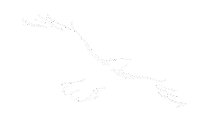
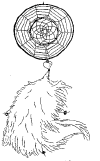
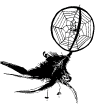
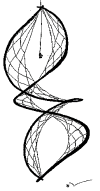


 Get
a course to promote your business online, explode your sales
Get
a course to promote your business online, explode your sales Get
software to promote your business online in less time
Get
software to promote your business online in less time Get
software to streamline your business and run it hands free.
Get
software to streamline your business and run it hands free.

